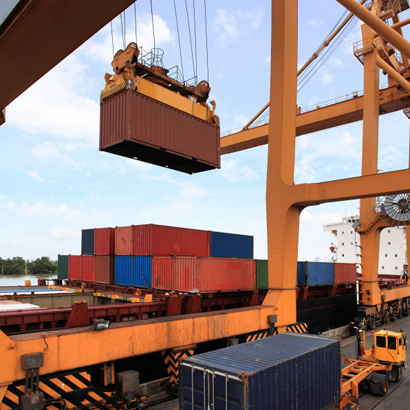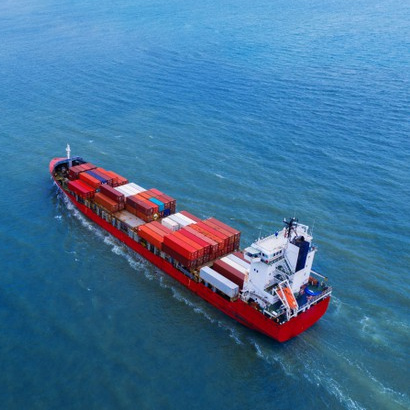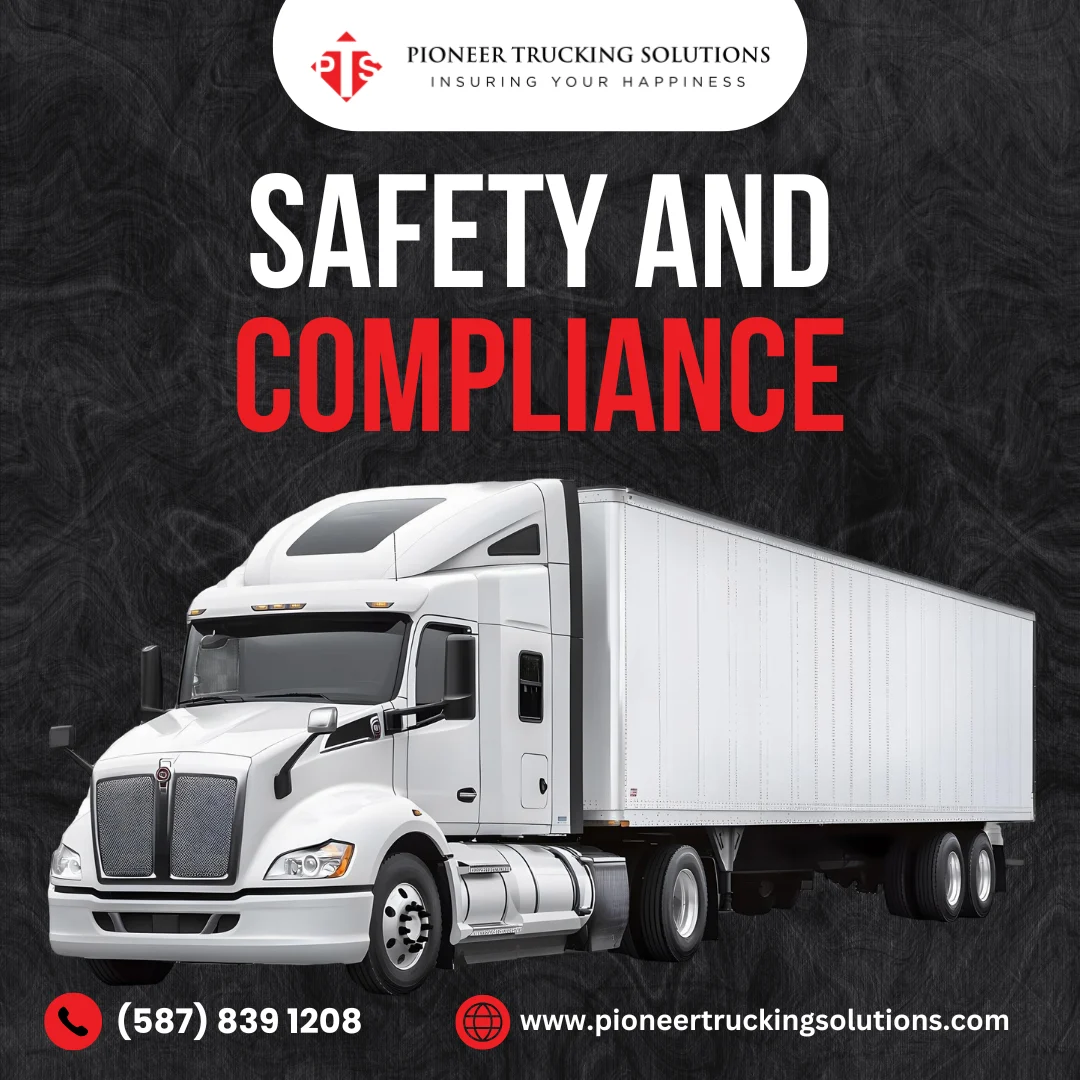Every day on the road brings a new set of decisions, and for truck drivers in Calgary, those decisions carry real weight. Between unpredictable weather, tight turns in the city, and the pressure to stay on schedule, it’s easy for safety to slip into the background.
But in this line of work, there’s no room for shortcuts.
Safety is what keeps your wheels turning, your record clean, and your business running. That’s why we’ve put together this guide, to walk you through the most important safety practices that aren’t just smart, but essential for any Calgary trucker who wants to stay sharp, stay compliant, and stay on the road.
Here are some of the top safety & compliance practices every commercial trucker in Calgary should follow:
1. Performing Daily Pre-Trip Inspections on Your Commercial Truck
Before you even turn the key, your safety starts with a walkaround. A proper pre-trip inspection isn’t just a routine task, it’s your first line of defense against breakdowns and surprises on the road. You’re trusting this truck to carry you and your load across long distances, so it only makes sense to make sure everything’s in working order before you move an inch.
Look at your tires, check your lights, test your brakes, and don’t ignore the small stuff like loose fittings or fluid leaks. Those few minutes could save you hours on the side of the road or worse, a situation that puts you and others at risk. It’s not about ticking boxes,it’s about knowing your rig is good to go.
2. Maintaining Brake Systems and Tire Health for Safer Drives
Once you’re on the road, your brakes and tires are what stand between a smooth stop and a serious problem. If your brakes feel soft or your tires look worn, that’s not something to brush off. Every time you haul a load through Calgary’s roads, whether it’s icy, rainy, or just full of traffic, you’re relying on those systems to respond when you need them most.
The key here is spotting them early. Make it part of your routine to check air pressure, tread depth, and brake responsiveness. A healthy truck not only handles better but gives you more confidence on the road, especially when you’re carrying weight or driving in tough conditions.
3. Securing Cargo Properly to Prevent Load Shifts and Damage
Now let’s talk about the cargo you’re hauling. Even if your truck is in perfect shape, a poorly secured load can throw everything off. One sudden brake, a tight corner, or even a rough patch of road, and that load can shift dangerously. You don’t just risk damaging the freight, you risk losing control of the vehicle.
Before every trip, take the time to double-check your straps, chains, tarps, and tie-downs. Make sure everything is tight and evenly balanced. It’s easy to rush this step, especially if you’re on a schedule, but taking a few extra minutes to secure your cargo properly is what keeps your truck steady and your trip on track.
4. Staying Updated on Calgary’s Trucking Regulations and Road Rules
Calgary isn’t always straightforward when it comes to truck routes, weight restrictions, or road rules. Things change: roads close, construction zones pop up, new bylaws take effect. If you’re not paying attention, you might find yourself in the wrong lane, on a restricted route, or pulling into a scale you didn’t know you had to stop for.
It helps to treat staying informed as part of the job. Check for updates from Alberta Transportation, stay in touch with your dispatcher or compliance officer, and always have a backup plan for rerouting. The more you know before you roll out, the fewer surprises you’ll face, and the smoother your day will go.
5. Understanding and Complying with Hours-of-Service Rules
When you’re behind the wheel for long stretches, it’s easy to push past your limits, especially if you’re trying to meet deadlines. But fatigue isn’t something you can just fight through, not in a rig this size. That’s why Hours-of-Service rules exist, and why they matter more than most drivers think.
Remember, they’re not there to slow you down, they’re there to keep you alert and safe. Knowing when to take a break, how long you can legally drive, and when you need a reset helps you avoid burnout, stay focused, and reduce your chances of a costly mistake. Planning your day around these rules gives you structure, and over time, it helps build a rhythm that keeps you moving without pushing you too far.
6. Managing Fatigue with Proper Rest and Break Scheduling
Fatigue doesn’t always show up all at once. It creeps in slowly. One moment you’re focused, and the next, your mind starts to wander, your reactions slow down, and you miss small but important details. For truckers covering long stretches of road, especially in and around Calgary, getting proper rest isn’t optional. It’s necessary.
Driving tired might not look like falling asleep at the wheel. Sometimes it’s taking a turn too late or not noticing a stop sign. That’s why building a routine with regular breaks, enough sleep, and smart scheduling is key. The more rested you are, the more focused and alert you’ll stay behind the wheel.
7. Keeping Your Documents, Permits, and Logs Organized and Accessible
It might not feel like a safety concern at first, but disorganized paperwork can quickly lead to bigger issues. Imagine pulling into a scale or getting stopped, and you’re scrambling to find the right permit or an updated log. That kind of stress is avoidable with just a little preparation.
Keeping your logbook current, knowing where your permits are, and making sure everything’s up to date helps you avoid unnecessary delays and fines. It also shows that you’re serious about doing things the right way. Staying organized might take a bit of habit-building, but once it’s in place, it makes your day-to-day a whole lot easier.
8. Using Mirrors and Checking Blind Spots Regularly
Driving a truck isn’t just about what’s in front of you. It’s just as much about knowing what’s happening beside you and behind you. With all the blind spots around a commercial vehicle, regular mirror checks are a must.
This means scanning your mirrors often, especially before making turns, lane changes, or when backing up. You can’t rely on just one glance. Staying aware of your surroundings keeps you ahead of any surprise moves from other drivers and gives you more time to react. The more this becomes part of your rhythm, the safer your drive becomes.
9. Keeping a Safe Following Distance in Heavy Traffic
It’s easy to feel the pressure in heavy traffic, especially when everyone seems to be in a rush. But closing the gap between you and the vehicle ahead doesn’t help, it just shortens your reaction time. The weight of your truck means you need more space to stop, and that space can make all the difference.
Keeping a safe following distance gives you time to adjust, whether it’s sudden braking, a lane shift, or a traffic jam ahead. It’s a simple habit, but it plays a huge role in avoiding rear-end collisions and keeping your record clean.
10. Mastering Safe Turns and Lane Changes in Urban Areas
City driving comes with its own set of challenges. Narrow lanes, sharp corners, and tight intersections mean you’ve got to be extra careful with every move you make. Trying to squeeze through quickly just because other drivers are impatient usually leads to trouble.
The key is planning ahead. Signal early, check your mirrors more than once, and give yourself the space you need to make your turn or change lanes smoothly. Don’t rush it. The more in control you are, the less room there is for error, and that’s how you build confidence behind the wheel.
11. Driving Defensively in High-Risk Zones and Intersections
Intersections, merging lanes, and busy construction areas are where things can go wrong quickly. These spots are unpredictable. One driver cuts in, another slams on the brakes, and suddenly you’re reacting in real time. That’s where defensive driving makes a big difference.
It’s not just about keeping your hands on the wheel. It’s about giving yourself enough space and time to see what’s coming before it happens. Slow down a bit earlier, scan ahead, and always expect the unexpected. That small adjustment in mindset can help you avoid close calls and keep your day on track.
12. Staying Alert to Changing Weather Conditions in Calgary
Weather in Calgary doesn’t give much warning. One minute the sky’s clear, and the next, you’re in a snowstorm or dealing with black ice. Even rain can turn safe roads into slippery ones fast, especially with a loaded truck.
Checking weather updates before and during your trip gives you a heads-up, but what matters most is how you adjust. Slowing down, increasing following distance, and avoiding sudden movements are all part of staying safe when the weather turns. When you stay alert, you stay ahead.
13. Following Calgary’s Speed Limits and Road Signage
It might seem basic, but speed limits and signage are there for a reason. Calgary has routes and restrictions just for trucks, and they can change depending on the area, time of day, or ongoing roadwork. Missing a sign could mean a fine or even a dangerous turn.
The more familiar you are with your routes, the easier it is to spot those important signs. Stick to the posted speed, follow truck-specific directions, and always keep an eye out for updates. It’s a simple habit that goes a long way in keeping your record clean and your drives stress-free.
14. Handling Emergency Situations with Calm and Precision
No one expects an emergency, but every driver knows they’re part of the job. Whether it’s a tire blowout, brake issue, or a driver cutting you off, how you respond matters more than what happens.
Staying calm is your best tool. When something goes wrong, keep both hands on the wheel, avoid sudden movements, and focus on keeping the truck stable. The more practiced and prepared you are, the more naturally those calm decisions will come to you. And that can make all the difference.
15. Communicating Clearly with Dispatch and Other Drivers
Trucking isn’t a solo job, even when you’re the only one in the cab. Staying connected with dispatch keeps things running smoothly. If you hit traffic, need a new route, or face a delay, a quick message or call can save a lot of confusion down the line.
Out on the road, communication is just as important. Using your signals clearly, making your intentions obvious, and giving other drivers space builds trust and keeps traffic flowing. Good communication is smart, and it helps keep everyone a little safer.
Final Thoughts
Practicing safety & compliance on Calgary’s roads is all about building the right habits and sticking to them every time you’re behind the wheel.
As a commercial truck driver, you carry more than just cargo. You carry responsibility. And that means being prepared, staying alert, and making smart decisions from the moment you start your shift to the moment you park for the day.
The good news is, safety doesn’t have to be complicated. It just takes consistency. A few extra minutes for an inspection, a quick check of the weather, or giving a little more space in traffic might not seem like much in the moment, but over time, those habits protect your license, your truck, and your future on the road.
Keep these practices in mind. Make them second nature. Because when safety becomes part of how you drive, everything else falls into place.







